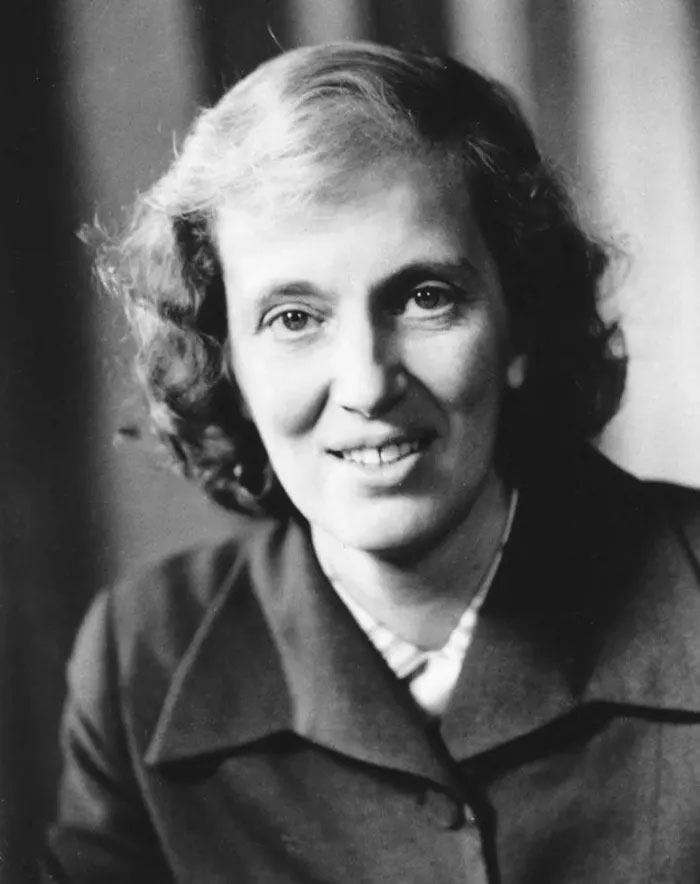Dorothy Hodgkin - female scientist paved the way for X-ray crystallography
"Generous, humble, hardworking throughout her research career" are the comments of colleagues and friends for Dorothy Hodgkin - winner of the 1964 Nobel Prize in Chemistry.
Born in Egypt in 1910, Dorothy Hodgkin 's love of science was sparked at a young age. Her parents were highly educated and energetic, which sowed the seeds of inspiration for her to be exposed to scientific subjects from archeology to botany.
Coming to England at the age of 10, Dorothy Hodgkin attended classes organized by the British National Parents Education Association. During a Chemistry class, Dorothy Hodgkin and her classmates suddenly created a solution of alum and copper sulfate. This is also the mixture that forms attractive crystals. That simple experiment was like the first brick in Dorothy Hodgkin's scientific research career.

Dorothy Hodgkin's love of science was sparked at a young age. (Photo: britannica)
Even though she was just a high school student, she created her own personal laboratory in her family's attic room in Beccles, Suffolk. She collects natural history specimens and performs analyzes on things like garden soil.
In 1928, Dorothy Hodgkin began studying chemistry at Somerville College, Oxford. During her fourth year, she chose to take part in a research project to investigate the crystal structure of dimethyl thallium halide and this launched her career in crystallography . Sometime after college, Dorothy Hodgkin was accepted into JD Bernal's laboratory in Cambridge, where she earned a doctorate in crystallography. His scientific career flourished but his health was not very positive. In 1934, Dorothy went to see a specialist about pain, deformity, and swelling in her hands.
In 1938, at the age of 28, Dorothy Hodgkin gave birth and her research career was successful, but she fell ill with an infection, causing a bout of rheumatoid arthritis. 'I found myself having difficulty and pain getting up and getting dressed. Every joint in my body seemed to be affected' , Dorothy Hodgkin once shared.
After several weeks of treatment at the specialist clinic, Dorothy Hodgkin returned to the laboratory. There, she found her hands so affected that she could not use the main switch in the X-ray equipment needed in the experiments. Undeterred, Dorothy Hodgkin created a long lever for more convenient operation and continued her research.
Arthritis doesn't seem to be stopping Dorothy Hodgkin. In 1946, Dorothy Hodgkin became the first person to completely determine the structure of a complex organic molecule (cholesterol) using X-ray crystallography. When her painful condition returned, she took aspirin and hot compresses on hands.

Dorothy Hodgkin is the winner of the 1964 Nobel Prize in Chemistry. (Photo: Jorge Lewinski)
In 1947, Dorothy Hodgkin was elected a Fellow of the Royal Society. She received the Royal Medal in 1956 and the Order of Merit in 1965. In 1964, she became the only British woman to receive the Nobel Prize in Chemistry , for her work determining the structure of biological substances. important chemicals such as penicillin, B12 and insulin using X-ray crystallography. After winning the Nobel Prize, she became increasingly respected internationally. She received countless invitations to attend and speak at scientific conferences and events around the world.
Despite her increasingly severe arthritis, Dorothy Hodgkin still devoted her time and expertise to scientific research and lectures for the rest of her life. She often brings a family member to help her on trips, and she uses a wheelchair to move between meetings and conferences when walking becomes too slow and causes too much pain. Dorothy Hodgkin passed away in 1994.
In addition to being a brilliant scientist, Dorothy Hodgkin was also humble and generous. The respect for her by her friends and colleagues was summed up by long-time collaborator Max Perutz at her memorial service: 'Dorothy Hodgkin radiated love for chemistry, family, friends, students , crystals and her university… Her love was combined with a brilliant mind and an iron will to achieve success, despite her weak and later severely disabled body. There is magic in her personality' .
- Anonymous female scientists contribute to changing the world
- The 10 greatest female geniuses in human history
- NASA changed the name of the road through the headquarters to honor the female scientist
- 5 U70 female scientists receive Kovalevskaia award
- For the first time, the female scientist was awarded the Ta Quang Buu Award
- Marie Curie built a scientific dream from a shabby lab
- Vietnamese female scientist in the most influential list in the world
- The patient with Hodgkin's lymphoma first got successful immunotherapy, lived a healthy life
- Female scientist specializing in 'domesticated' waste
- L 'Oréal - UNESCO: Award for female scientists
- Vietnamese female doctoralists reached the top 100 Asian scientists
- Five Vietnamese female scientists were honored by UNESCO
 The most famous scientific failures in history
The most famous scientific failures in history Mysterious genius mechanic and the machine froze time
Mysterious genius mechanic and the machine froze time The son carries the 'bad gene' of genius Albert Einstein
The son carries the 'bad gene' of genius Albert Einstein Isaac Newton
Isaac Newton